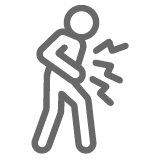2020 E. coli Outbreak Linked to Unknown Source 1
Final Update

Posted on December 18, 2020 at 3:00 PM ET
This outbreak is over. Learn how you can prevent getting sick from E. coli.
CDC, public health and regulatory officials in several states, and the U.S. Food and Drug Administration (FDA) investigated several multistate outbreaks of E. coli O157:H7 infections. This outbreak is different from two other E. coli O157:H7 outbreaks that occurred at the same time (E. coli outbreak linked to leafy greens and E. coli outbreak with unknown source 3).

- Reported Cases: 32
- States: 12
- Hospitalizations: 15
- Deaths: 1
- As of December 18, 2020, this outbreak is over.
- A total of 32 people infected with the outbreak strain of E. coli O157:H7 were reported from 12 states.
- Illnesses started on dates ranging from June 6, 2020, to October 25, 2020.
- 15 people were hospitalized, and one person developed hemolytic uremic syndrome (HUS), a type of kidney failure. One death was reported from Michigan.
- There was not enough information available for investigators to identify the source of this outbreak.

Follow these general ways to prevent getting sick from E. coli:
- Wash your hands after using the restroom or changing diapers, before and after preparing or eating food, and after contact with animals.
- Cook meats thoroughly. Use a food thermometer to check that the meat has reached a safe internal temperature.
- Don’t cross-contaminate food preparation areas. Thoroughly wash hands, counters, cutting boards, and utensils after touching raw meat.
- Wash fruits and vegetables before eating, unless the package says the contents have been washed.
- Avoid raw milk, other unpasteurized dairy products, and unpasteurized juices.

- People usually get sick from Shiga toxin-producing E. coli (STEC) 2 to 8 days (average of 3 to 4 days) after swallowing the germ.
- Symptoms often include severe stomach cramps, diarrhea (often bloody), and vomiting. Some people may have a fever, which usually is not very high (less than 101˚F/38.5˚C).
- Some people with a STEC infection may get a type of kidney failure called hemolytic uremic syndrome (HUS).
- Antibiotics are not recommended for patients with suspected E. coli infections until diagnostic testing can be performed and E. coli infection is ruled out. Some studies have shown that administering antibiotics to patients with E. coli infections might increase their risk of developing HUS, and a benefit of treatment has not been clearly demonstrated.
- For more information, see Symptoms of E. coli Infection.
December 18, 2020
CDC, public health and regulatory officials in several states, and the U.S. Food and Drug Administration (FDA) investigated a multistate outbreak of E. coli O157:H7 infections.
Public health investigators used the PulseNet system to identify illnesses that may have been part of this outbreak. PulseNet is the national subtyping network of public health and food regulatory agency laboratories coordinated by CDC. DNA fingerprinting is performed on E. coli bacteria isolated from ill people by using a standardized laboratory and data analysis method called whole genome sequencing (WGS). CDC PulseNet manages a national database of these sequences that are used to identify possible outbreaks. WGS gives investigators detailed information about the bacteria causing illness. In this investigation, WGS showed that bacteria isolated from ill people were closely related genetically. This means that people in this outbreak were more likely to share a common source of infection.
As of December 16, 2020, a total of 32 people infected with the outbreak strain of E. coli O157:H7 were reported from 12 states. A list of the states and the number of cases in each can be found on the Map of Reported Cases page.
Illnesses started on dates ranging from June 6, 2020, to October 25, 2020. Ill people ranged in age from 2 to 75 years, with a median age of 27 years, and 72% were female. Of 29 ill people with information available, 15 were hospitalized and 1 developed hemolytic uremic syndrome (HUS), a type of kidney failure. One death was reported from Michigan.
WGS analysis of isolates from 15 ill people identified antibiotic resistance to chloramphenicol, streptomycin, sulfisoxazole, tetracycline, and trimethoprim-sulfamethoxazole. Standard antibiotic resistance testing by CDC’s National Antimicrobial Resistance Monitoring System (NARMS) laboratory is currently underway. These findings do not affect treatment guidance since antibiotics are not recommended for patients with E. coli O157:H7 infections.
Investigation of the Outbreak
State and local public health officials interviewed ill people to determine what they ate and other exposures in the week before they got sick. Ill people reported eating a variety of food items. Several ill people also reported eating at the same restaurant and had eaten multiple common food items. CDC analyzed the interview data and did not identify a specific food item as a potential source of the outbreak. FDA conducted traceback investigations for several of the food items served at the restaurant and did not find a common source in the distribution chain.
As of December 18, 2020, this outbreak is over. This outbreak ended before enough information was available for investigators to identify the likely source.